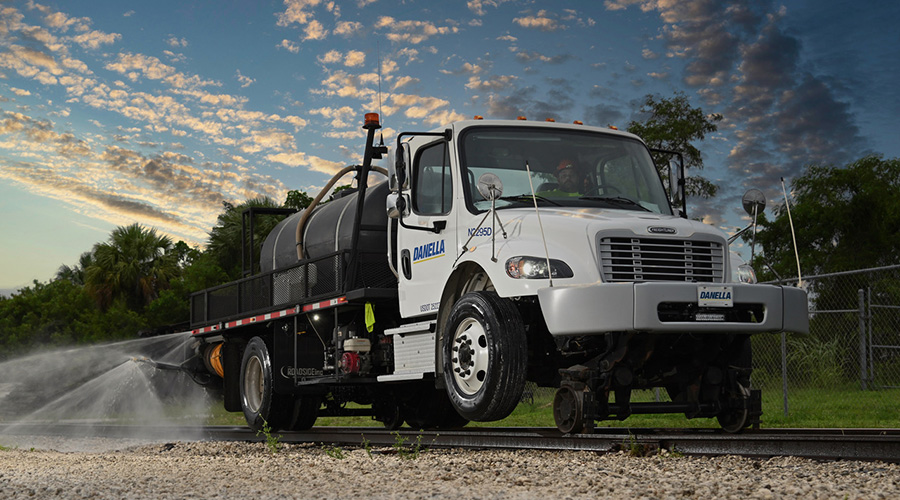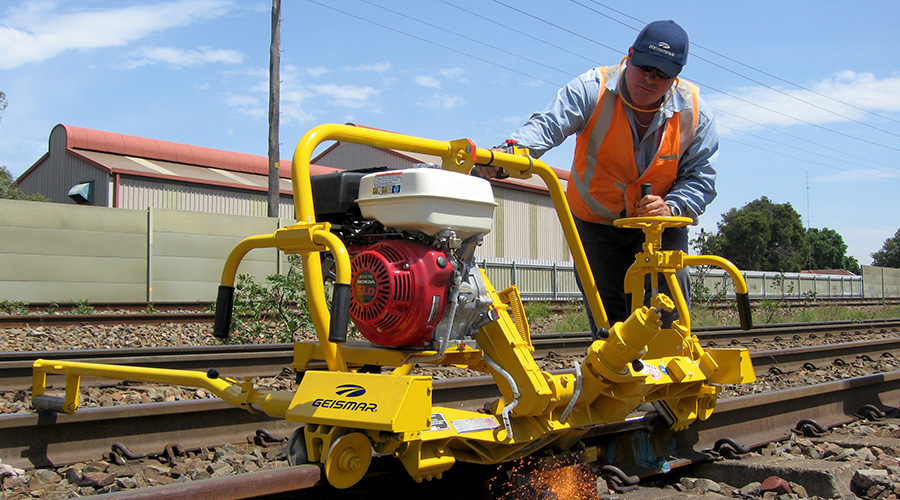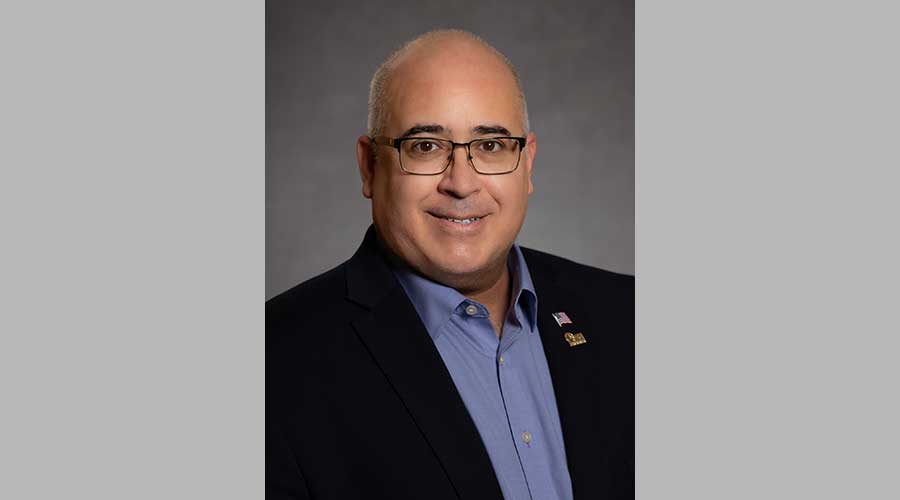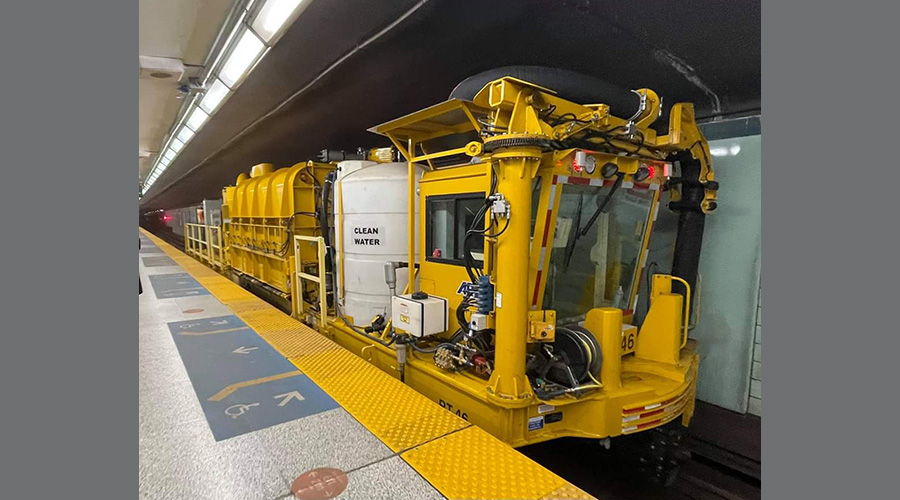Stay updated on news, articles and information for the rail industry
October 2010
Rail News: MOW
Maintenance of Way: Tamping and surfacing equipment
Compiled by Katie Berk, assistant editor
Tamping and surfacing are integral elements of railroads' maintenance-of-way (MOW) programs. They help roads boost track stability and, in turn, operate more safely and efficiently.
What are railroad MOW managers and contractors looking for when it comes to tamping and surfacing equipment? Pretty much what they're always looking for: cost-effective, user-friendly and reliably productive machines that enable them to complete tamping and surfacing projects quickly, particularly as work windows shorten.
It's no surprise, then, that tamping and surfacing equipment suppliers and service providers continue to seek ways to improve their respective wares and offerings while keeping railroads' "cost-effective" requirement in mind.
Last month, Progressive Railroading asked a range of tamping and surfacing-related equipment suppliers to provide updates on their respective products and services. Their emailed responses follow.
Balfour Beatty Rail Inc.
Railroads require surfacing that "enables them to operate safely and efficiently, especially at turnouts, crossings, curves and transitions on and off of bridge structures," said Mark Snailham, Balfour Beatty Rail Inc.'s vice president, rail services. To that end, it's important that a surfacing contractor has "the necessary experience and skills to provide quality, cost-effective results," he added, noting that Balfour Beatty's average tamper operator has nine years of operating experience.
Operators are assigned a specific machine, and they're cross-trained on both tamper and regulator machines to "aid in avoiding personnel restraints," Snailham said.
"We provide professional, full-time surfacing crews year round and 24-hour technical support for customers — it's not just a sideline," he said.
Meanwhile, the company's preventative maintenance program is designed to ensure less equipment downtime and increased productivity. Balfour Beatty currently uses the latest Mark IV tampers equipped with laser alignment systems "so we can perform our work with the highest possible level of precision," Snailham said.
Through centralized surfacing operations, Balfour Beatty also is able to schedule and maximize availability to meet customer needs. It also enables the company to apply uniform standards for training, safety and operating practices.
"We are using the same philosophy in our surfacing operations that Southwest Airlines uses with their fleet of aircraft," Snailham said. "By owning and maintaining one type and generation of surfacing equipment, we are able to reduce our repair parts inventory, reduce operator training time and ensure consistency of operation."
Balfour Beatty's surfacing fleet features what Snailham characterized as "the highest abrasion-resistant wear components in the industry."
The company currently is testing broom elements on a surfacing set in Gillette, Wyo., and analyzing the latest laser measurement technology to ensure the best quality for finished vertical, horizontal and lateral profile of the track.
Modern Track Machinery Inc.
When it comes to tamping and surfacing, officials at Modern Track Machinery Inc. (MTM) believe the industry focus has been on large production tampers, which "has left behind the smaller spot tamper." However, there is a need for a "highly transportable" tamper for spot tamping, they said, adding that MTM offers a few options to meet the niche need, including:
- The BRAD, a self-propelled tie tamper designed for tamping down ties in a tie or rail gang. The machine's "off-trackable" set off wheels make it "perfect" for spot tamping in situations where tamper mobility is important, according to MTM. The BRAD easily can be set on and off track, and loaded and unloaded on a flatbed for transporting from job site to job site, according to MTM.
- The BRM-8AC, a switch tamper designed for transit agency use. The machine features independent tamping heads and is suited for tamping down ties after maintenance or general surfacing. It can be supplied with bogies, enabling it to work in the tightest radius curves, MTM said. The tamper is available in various track gauges per customers' requirements.
- The MB-8AC, a tamping head attachment that can be used off the Geismar 360 crane. Its design offers an "excellent solution for switch tamping and tamping down ties after replacement," according to MTM. The radio-controlled unit can be operated from the crane operator's position and does not require any hard wires to the crane. The attachment provides easy access to adjacent tracks, enabling "quick clearing without actual track possession," MTM said.
Harsco Rail
Railroads' "desires and needs" haven't changed that much during the past 20 to 25 years — improved productivity, reduced down-time, lower total cost and more automation continue to be high on roads' lists of expectations, according to Harsco Rail.
However, the focus on safety and ergonomics has become more important during the past 15 years, Harsco officials believe.
As North American railroads install more concrete ties, they have been seeking tamper versatility — specifically, they want tampers to be able to "effectively transition from concrete to wood ties and back," Harsco said.
In addition, railroads want machines that feature a simplified operator interface and drive "any complexity down into an effective automated control system," Harsco said.
During the past year, Harsco has been fine-tuning its new Drone Tamper, which is designed to match — and, in many cases, exceed — current tamping gang productivity but with "reduced manpower requirements and overall costs," according to Harsco. So far this year, the company has received orders for nine Drone tampers.
Meanwhile, the evolution of Harsco's Tie Finder system — which is "key to the success of the Drone Tamper" — enables the company to seek other maintenance equipment platforms for fast, automated operations, Harsco said.
J.E.R. Overhaul Inc.
Railroads and contractors continually seek reliable and productive surfacing equipment. With today's machinery becoming "very sophisticated and complex," customers are looking for simple operator interfaces that provide ease of use, according to J.E.R. Overhaul Inc., a Nordco Inc. company.
Officials at J.E.R. Overhaul believe they've "proven the concept that equipment revitalization works" — the company rebuilds surfacing equipment as new and puts it back into the "workforce" with the same or better production rate than new offerings, according to the company.
J.E.R. currently is expanding the rebuilding capabilities of various tampers by engineering modern control systems to upgrade various tampers on the market.
Plasser American Corp.
Plasser American Corp.'s customers are demanding high-production and switch tamping machines, often with integrated dynamic track stabilization, such as the Plasser 09-3X DYNAMIC, 09-32 Dyna-C.A.T. and 09-16 Dyna-C.A.T., according to the company. Almost all of the machines feature high-capacity ballast regulators or ballast distribution systems, according to Plasser.
During the past few years, Plasser has developed multiple tie tamping machines, including the 09-2X-C.A.T. and the aforementioned 09-3X DYNAMIC. The machines can be used on track with irregular tie spacing and are equipped with Plasser's Automated Tie Locating Analyzing System (ATLAS), which enables the machine to be fully automated.
Plasser's new ballast vacuum machine currently is being tested at the Port Authority Trans-Hudson Corp., a subsidiary of the Port Authority of New York and New Jersey.


 LRW Honors Amtrak’s Acheson As Railway Woman Of The Year
LRW Honors Amtrak’s Acheson As Railway Woman Of The Year
 From Editor-In-Chief Foran: Of Gender Equity And Inclusion
From Editor-In-Chief Foran: Of Gender Equity And Inclusion
 Spotlight On Some Of Today’s Rail Safety Products
Spotlight On Some Of Today’s Rail Safety Products
 Women of Influence in Rail eBook
Women of Influence in Rail eBook
 railPrime
railPrime








